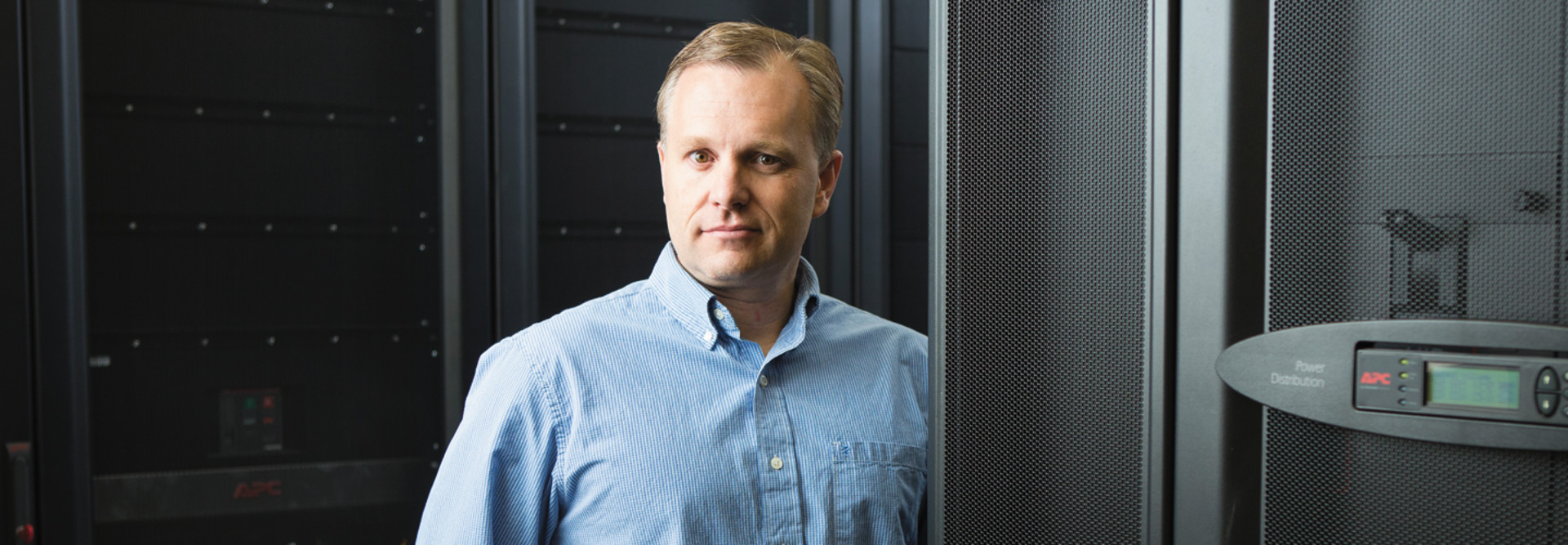Keep Cool with Hot-Aisle Containment
When Salt Lake Community College (SLCC) opened the new $45 million Center for Arts and Media on its South City campus in November 2013, the college instantly charged to the forefront of digital media and film education in the Western U.S.
It was up to Technology Director Casey Moore and his IT team to keep the new wealth of professional-grade multimedia equipment humming with the right power and cooling solution.
The 130,000-square-foot Center for Arts and Media includes state-of-the-art TV and film production studios, a soundstage, screening rooms, gaming labs, web design labs and more, alongside banks of computers dedicated for video and audio production and editing.
The college built a new data center to support and back up the new multimedia equipment, along with hardware from the campus's old data center. To ensure reliable and consistent availability of critical applications, the IT team installed a complete power and cooling solution from APC by Schneider Electric.
"The old data center for the South City campus was about the size of a closet. Sometimes it was a very hot closet," Moore says. "We wanted a power and cooling solution that we knew worked and that we could manage."
SLCC is not alone: Higher education institutions increasingly look to power and cooling technologies to improve efficiency while maintaining reliability in the data centers, Forrester Research analyst Sophia Vargas says. Greater data center densities today only add to the increased focus on power and cooling, but saving money and gaining increased control over the computing environment are the main drivers.
"Densities across average environments, like most of those in higher education, are increasing slowly," Vargas says. "The incentive to reconfigure facility layouts and [power and cooling] equipment is driven more by efforts to optimize facility management and reduce cost by using energy more efficiently."
An APC Symmetra Power Array PX 500 kVA uninterruptible power supply (UPS) provides a flexible range of power and offers a modular architecture for easy scaling of both power and runtime for the new data center at SLCC. Eight rack-mounted APC InRow Chilled Water coolers also offer built-in intelligence that automatically adjusts fan speeds and chilled-water flow to the heat load. A hot-aisle containment system and hot-swappable power distribution units for individual racks complete the solution.
Built-In Intelligence
APC StruxureWare Data Center Expert software enables the IT staff to monitor and manage power consumption and temperature in the Center for Arts and Media data center (and all other APC installations on SLCC campuses) from a single web-based interface, System Administrator John Madsen says. The South City campus is one of 10 college sites in Salt Lake City and its suburbs.
The percentage of all electricity used in North America that powers data centers
SOURCE: Renewable and Sustainable Energy Reviews, "A Review of Data Center Cooling Technology, Operating Conditions and the Corresponding Waste Heat Recovery Opportunity," March 2014
"You want the ability to see the entire power and cooling environment from anywhere," Madsen says. "If I were giving advice about picking a system, I'd say to insist on that level of reporting and control."
Minimizing power use was not the primary driver of his team's decision to standardize on APC equipment, Moore says. But the overall efficiency of the system, which automatically matches power to the real-time load, is an added benefit.
Moore and Madsen estimate the data center is operating at only about 25 to 30 percent of its capacity, and draws only about 20kVA, a fraction of the Symmetra Power Array's capacity.
"We built in a lot of room for growth and wanted a power and cooling system that could handle it," Madsen says. "As the data center grows, we'll probably want to manage the electricity and temperature more aggressively."
Need to Know
Jamie Soule, IT operations manager at the University of Massachusetts, Boston, says visibility into critical systems such as power and cooling is imperative.
Soule and his IT team plan to move the university's main data center into a new space in 18 months and are evaluating solutions. Ease of monitoring and management are among their key criteria. UMass Boston today uses two APC by Schneider Electric 80kVA Symmetra UPSs for power backup and management of 90 physical servers.
For cooling, the university uses seven of Emerson's Liebert rack-chilled water coolers in the main data center, which is arranged in hot and cold aisles, but without containment structures. Soule is investigating containment systems for the new data center.
Drexel University in Philadelphia relocated and upgraded its secondary data center last year, installing an APC by Schneider Electric system that includes a Symmetra 100kVA UPS and seven InRow coolers with N+1 redundancy, says Paul Keenan, executive director of systems and security.
Keenan would like to upgrade the university's primary data center to a power and cooling system similar to that in the secondary facility. APC software enables the IT staff to centrally manage the disparate pieces of power and cooling equipment, Keenan says.
Although efficiency is important, the reason Keenan hopes to upgrade is even more basic: "Reliability in the form of that N+1 redundancy is what the power and cooling systems are all about."
SLCC's Moore concurs: By far, his greatest justification for the college's investment in the new system is simply that "it works." Power and cooling is just one of several fundamental components of the new infrastructure that make the technology-rich arts and media center possible, Moore says.
"Typically, power is not something we worry about, and that's the way it should be," he says.








